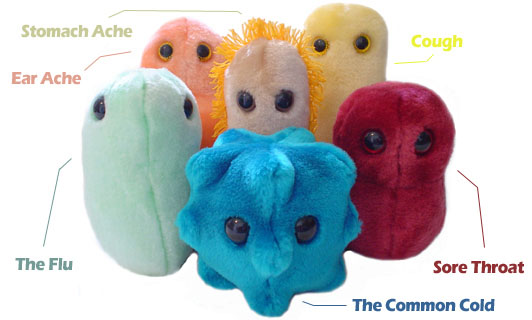Find out how your customers live
Do you know what makes a brand different from just a business? Feelings and emotions of clients. It seems like an obvious idea, but entrepreneurs rarely think about it.
There is a lot of competition in almost every area, and in order for customers to “stick” to your brand, you need to teach it to stand out.
How – we figured out together with the marketing director of OLL.TV Maxim Belov . Earlier, in the position of CMO, he launched a new positioning of the Planet of Cinema – “ЦЕ ЩЕСЬ!” In addition, he brought Microsoft Office 365 Personal to the national market and attracted more than 1 million customers to Lifecell in just six months.
At Laba, Maxim teaches courses in marketing and brand management.

Many entrepreneurs believe that the business works for them. This is partly true, because they take advantage of its results – profit. However, there is one important “but”: a business does not exist without clients.
At the beginning of my career, a story happened to me. Having moved from Chernigov to Kiev, I worked as a call center operator at UMC (now Vodafone). Clients sent me three funny letters several times a day. I was angry and upset. And then my curator told me: “You can be endlessly upset, but your salary lies in the pockets of the people who call you.”
Emotional marketing puts at the forefront not the business and not even the product, but the desires, dreams and pains of the client. The better the company knows the consumer and penetrates his life, the higher the probability create strong emotional bonds. And the client’s trust is the predicted profit.
People may not even be aware of their emotional attachment to the brand’s product, they are simply drawn – and this is already the highest degree of commitment.
When I worked at Planet Cinema, at one speech I talked about the CINETECH + case (in these halls there are more comfortable chairs and wider aisles between the rows). And suddenly one of the listeners clearly changed her expression in surprise. I asked her why, and in response I heard: “For a long time I could not understand why I love such halls. It seems like nothing special – this is not IMAX or 4DX. And only now I realized – thanks to that very distance, no one touches me and I am resting. ”
You can study your clients without involving an external agency. There are many modern, inexpensive and generally free methods:
- Google Forms Survey
- interactive voting on social networks
- breakfast with a client (this is a common practice in B2B, although it is also possible in B2C)
# 2. Define consumer patterns
A consumer pattern is a “template” by which a person acts when making decisions about buying or interacting with a company. Thanks to the patterns, the brand knows about the main “hooks” on which it can pick up its customers, trigger them and sell the product.
There are 9 consumer patterns in total: choosing, communicator, explorer, seeking himself, hedonist, victim, rebel, activist, citizen.
On the Ukrainian market, two are most pronounced:
1. Communicator – demonstrates its success, even with the prefix “pseudo”. Most often they are regulars of the credit programs of large banks, because they live on credit. Brands, gadgets, fakes – that’s about them.
How to use? Emphasis on social status.
Main credos: “Be stylish!”, “Be modern and cool!”, “Cause a storm of emotions in your friends”, “Let everyone envy you!”
Citrus is working with this consumer pattern. Their main message is “It is permissible”. That is, you can be not like everyone else and no less cool even without an iPhone. Any other gadget can make you special.
2. Victim – is under tremendous stress if he cannot make the best deal of his life. These are prizes that are held for any discounts and are terribly upset if they missed the opportunity to save money. After a successful deal, they feel that they have been deceived anyway, and again they try to find better conditions.
How to use? Create in the client a sense of victory over the big capitalist machine.
Main credos: “Save!”, “Your best deal”, “Only now”, “This is a triumph”, “You deceived everyone and got unique conditions”, “Everyone will be envious, because you the same “son of my mother’s friend” “.
The best example here is Black Friday. People from all over the world rush in pursuit of the maximum discounts on their favorite brands, and they happily use it once a year.

Would you like to receive a digest of articles?
One letter with the best materials per week. Subscribe not to miss anything.
Thank you for subscribing!
# 3. Generate your chips
A business must have a specific characteristic in a product – a chip that distinguishes it from competitors. Especially when it comes to positioning in emotional marketing, because it guarantees the brand a place in the mind of the client.
On the LABA course and in the professional literature, this distinctive feature is called the point of differentiation.
There are several points of differentiation most desirable for a business:
- a new product category that derived from the brand name.Example: all hot tubs now referred to as Jacuzzi, Xerox has taken over the copier market and Pampers has taken over diapers.
- the brand’s position as a leader in solving a particular problem.Example: Mr. Proper, Domestos. Everyone knows that Mr. Proper cleans the floor twice as fast, but no one cleans the floor three or four times. Or Domestos kills 99.9% of germs – nobody else kills.
- price positioning.More for a higher price – 500 ml + 100 ml for free, or less for less – shops “All by 8 UAH “or low-cost airlines.
- Possession of prestige or pseudo-prestige. Parker pen or fake Rolex watch design.
# 4. Create associations and link them to your brand
The brand pyramid will come to the rescue in this, which describes its essence. That is, why does he exist, how he changes the world around him, what kind of personality he has and how he communicates.
For example, Marlboro has a cowboy. He is a middle-aged man, smelling of tobacco and desert winds, riding a faithful horse. He does a tough but necessary job. Such a person may seem rustic, but he is courageous, loves his job simply because he does not know anything else. When he jumps off his horse, the dust of the roads along which he has been riding for a long time is knocked off him. Here the hero takes out a pack of cigarettes, and everyone understands that he is a Marlboro cowboy.
If a person is able to describe a brand, this is a reaction to such emotional characteristics. They are embedded in communication, must be understandable and convey a specific, necessary essence.
For example, ask a passer-by on the street about Kyivstar – and you will hear such images: reliable, Ukrainian, blue, star. If we talk about Vodafone, then a person will say: there used to be an egg, now there is a comma, red, international, something about speed. If you ask him what lifecell is, he will answer: funny, cartoonish, snail, yellowish, youthful. McDonald’s is international, family-run, warm-hearted, kind, loves children, not very healthy, but very high quality fast food.
A test question when building emotional characteristics of a brand – “What is he?”
Brand managers measure their KPIs by answering these questions.
# 5. Be predictable in communication
In emotional marketing, there is the concept of consistency, that is, “consistency.” To create a strong emotional connection, a brand must be understandable to the client, which means it must be predictable.
If an old friend does something like that, you instantly throw your relationship back several stages. You start to ask yourself again: “Can you trust him?” It’s the same story in business. Brand management is like a man with a jackhammer who hits one place constantly and measuredly.
Wherever the business comes into contact with the consumer, you need to speak in the words they are used to. If a brand is yellow, sweet, square, then it should be yellow, sweet, square with its customers everywhere and always.
For example, Borjomi correctly deployed messages and broadcasts healthy lifestyles, returned to his Georgian roots – he presented it beautifully and distinctively. Morshynska also attracted sports opinion leaders to the topic of health. All posts are about the same.
It is important to include the main characteristics in the brand messages:
- Borjomi – Living water, living legend
- Monobank – First bank for cats
- Seadora – Fish-booking online
- Pumpidup – Popcorn that is the norm
- Planet Kino – CHEESE!
- bodo – Wow!
# 6. Monitor your brand health
Essentially, a brand is a phantom. Some non-existent substance, just the knowledge and emotions of the client. But people tend to humanize everything that happens around them. A brand exists as long as it shares its value, emotion and essence. And his health is the knowledge about him.
I heard the best explanation at one of my first trainings: “Imagine that at some point all the Coca-Cola factories magically disappear all over the earth. What remains – knowledge, events, memories of how we interfered with her with Mentos, and New Year’s branded trucks with advertising – this is the health of the Coca-Cola brand. ”
Brand health has three levels:
- spontaneous knowledge – top of mind or first named in the survey
How to determine? Ask the respondents: “What brands, for example, of sunflower oil do you know?” The first named is the top-of-mind that the person has trusted. The respondent associates such a brand with a whole category – an equal sign appears between them, a very strong emotional connection is formed. For marketers, this is the holy grail. After all, the consumer has already gone all the way to the adoption of the brand in his life. It will be very expensive and time-consuming to entice a client from such a company.
- knowledge without prompting – these are all brands that respondents name after the first in the survey
- knowledge with a hint – brands that a person recognized from branded photos of the company’s products or from individual parts of its corporate identity
# 7. Analyze consumer trends
The most practical and endless source of new customer knowledge is consumer preference research.
My Top 6 Trend Watching Resources:
– Euromonitor International – here are the latest trends
– DATAREPORTAL – many reports on internet usage – global and by country
– Business2community, Inc, Bettermarketing, Hubspot – Digital Marketing Practical Tips
When the first lockdown struck in March 2020, we at Planet Cinema caught a trend – that people tend to unite in the face of danger or in difficult times. They support each other and the brands they love.
We turned to our clients for help, offering to buy “quarantine” certificates for 100 UAH and use them when the cinemas reopen. As a result, 112 thousand certificates were sold for the amount of UAH 11 million. People bought them not to go to the movies at a discount, but to help their favorite brand.
For this case, Vertigo Agency & Production received a gold EFFIE statuette in the campaigns during the COVID-19 category, and the Planet Kino marketing team topped the Best marketing teams rating in the tourism, culture and sports category. And it’s not even about rewards or money, because the real price of such a relationship between a company and a client is much higher – love for the brand.
Would you like to receive a digest of articles?
One letter with the best materials per week. Subscribe not to miss anything.
Thank you for subscribing!
